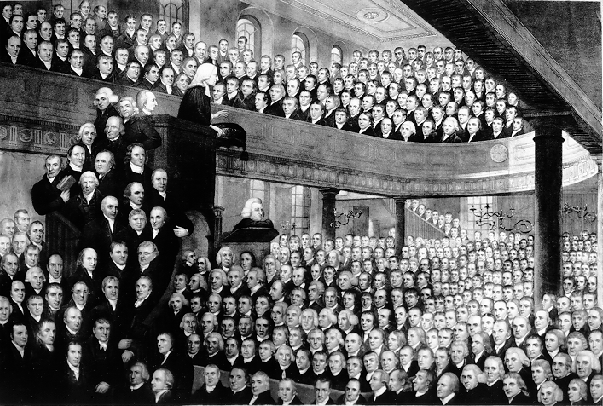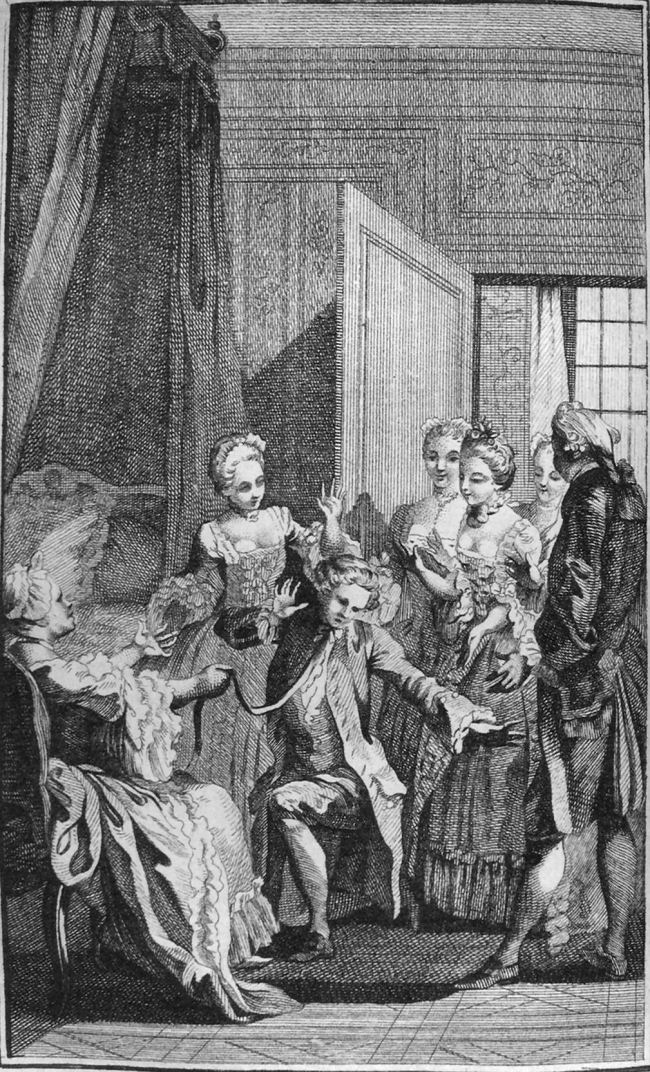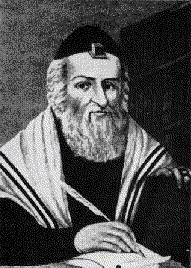Early Modern Views of God I (17th-18th Centuries)
“Disbelief in God remained scarcely more plausible than disbelief in gravity. Even radical thinkers almost universally regarded an afterlife in which God punished the wicked as a necessary sanction for morality”
--James Turner
Donne's poem explores one man's search for the true church (Christ's spouse), whether it be "richly painted" as in Catholic ceremony or torn and mourning as in England or Germany. Does the true church appear on the "one hill" of Canterbury (Anglican), the seven of Rome or the "no hill" of Calvin's Geneva. He wonders whether the spouse of Christ is open to all who would love her or only a few in limited places.
Show me dear Christ, thy spouse so bright and clear.
What! is it she which on the other shore
Goes richly painted? or which, robb'd and tore,
Laments and mourns in Germany and here?
Sleeps she a thousand, then peeps up one year?
Is she self-truth, and errs? now new, now outwore?
Doth she, and did she, and shall she evermore
On one, on seven, or on no hill appear?
Dwells she with us, or like adventuring knights
First travel we to seek, and then make love?
Betray, kind husband, thy spouse to our sights,
And let mine amorous soul court thy mild Dove,
Who is most true and pleasing to thee then
When she'is embrac'd and open to most men.
--John Donne, Holy Sonnet XVIII
As our readings show, the period struggled with a number of questions relating to the nature of religion, especially Christianity:
- What role should civil government have in upholding and/or respecting religion?
- Should there be a state-approved religion?
- What role does reason have in ascertaining divine truths?
- What place do emotions have in the spiritual life?
- Can divine revelation take place?
- Can one put one's trust in religion tradition and/or authority?
- What does correct worship entail?
- Does God answer prayer?
- Do miracles happen? Did they happen in the past?
- What shape should an admirable life take? a Christian life?
- What makes us acceptable to God?
- How do we know that God exists?
- How do we know what God is like?
- What does the creation reveal about God? What does the moral law?
Even a complete overview of the possible religious positions would be quite lengthy. The following is meant to provide the most general of overviews, and therefore, it focuses on in each case only a few of the distinguishing characteristics:
I. Roman Catholicism (after Trent)
Gallicanism: National Catholic movement that stressed local regional control over against papal (and Italian) control. They stressed conciliiar authority as exceeding that of the pope. Popes, therefore, were not above reform. They tended to stress more activism and involvement of bishops and national authorities over French church administration and belief.
Ultramontanism: Those Catholics who wanted strong papal control of the Church in all regions. In the 17th century, ultramontanes were associated with the Jesuits and stood opposed to both the Gallicanists and the Jansenists.
Jansenism: Condemned by the papacy in 1713, for a time, Jansenist beliefs held to a strong Calvinist understanding of Catholic doctrine, stressing predestination, infrequent reception of the Eucharist, original sin, and strict holiness of life. Its more famous adherents included Blaise Pascal, Racine, and the covenant of Port-Royal.
Quietism: Key figures included Miguel de Molinos, Madame Guyon, and Bishop Francois Fenelon. The Quietists were most popular in Catholic Spain and France. As a movement they stressed total passivity before God and discounted any spiritual activism.
II. Lutheranism (1648-1789)
"Protestant Scholasticism": Not necessarily a self-designated term, those strict Lutherans who stressed minutely defined beliefs and engaged in an often arid and technical theology practiced a kind of "Protestant Scholasticism." Tended to lead to a pronounced emphasis on carefully defined doctrine in order to be counted as a true Christian in confession.
Pietism: A reform movement within German Lutheranism, lead by Philip Jakob Spener and August Herman Francke, that stressed small group discipleship, personal holiness, the priesthood of all Christians, and the importance of missions. They had an impact on Count Zinzendorf and the Moravian Brethren.
III. Calvinism
Presbyterianism: A form of Calvinism growing out of the Church of Scotland under John Knox (1505-1572), Presbyterians in this period typically stressed the Westminister Confession, a form of church order organized around local synods and elders (presbyters), as well as close attention to the study of scripture. Presbyterians also established themselves in England, Ulster, Ireland and in the U.S. (See Puritans below.)
Congregationalism: The more liberal branch of Calvinism in the period tended to embrace view of church polity in which each congregation is independent. In other respects, Congregationalists shared typical Calvinist belief, though by the late-18th century many were lapsing into Unitarianism. They were well-established in the Northeastern U.S.
IV. Church of England (Post-Reformation Anglicanism)
Loyalist: The more conservative form of Anglican practice in the period tended to stress loyalty to the king, was more sympathetic to "Catholic" ideas like apostolic succession and the Real Presence of Christ in the Eucharist.
Puritans: The more Calvinistic and radical wing of the Anglican church during the 17th century worked to "purify" the Church of England, eventually coming to power in the English Civil War and imposed Presbyterian polity and worship during the Interregnum. Once the king returned after 1660, the Puritan party continued to function as Non-Conformists.
Methodism: Lead by John and Charles Wesley, the "Methodists" were an 18th-century reform movement within the Anglican Church which stressed the importance of the "new birth," personal discipleship, missionary involvement, concern for the poor, as well as small group meetings. Eventually, the movement broke with the Church of England.

Latitudinarianism: Growing out of 17th-century Cambridge Platonism, Latitudinarianism was more a mindset than a movement; it tended to stress the importance of reason and downplayed the differences in confession of faith, liturgy, and practice as unimportant. Latitudinarianism in its broadest forms paved the way for theistic beliefs, such as deism, that discounted revelation or Christian distinctives.
V. Other Christian Groups
Baptists: In the 17th and 18th centuries, Baptists arose out of the Anabaptist movements and the Separatist wing of the Puritans, dividing into General Baptist, who were more Armenian in theology, and Particular Baptists who were more Calvinistic. Most stressed congregational polity, adult believer's baptism, a memorial view of the Lord's Supper, and personal conversion. Baptists also stressed the importance of church-state separation, and were influential in shaping the Bill of Rights in the U.S. regarding this matter.
Mennonites: Mennonites look back to Menno Simmons (1496–1561, the Anabaptist reformer. In the seventeenth century, those who united with the Swiss state church became Mennonites, while those who maintained their distance became Amish. Mennonites, like most Anabaptist groups, stress believer's baptism, a memorial view of the Lord's Supper, individual conversion, congregational church polity, and church discipline. They also are historically pacifists and concerned with limiting technology's impact of the Christian.
Amish: Following Jacob Amman, the Amish began as a reform movement within the Mennonite churches. In particular they stressed a strict practice of church discipline of "shunning," as well as distance form any state church. Like many of the Mennonites, they migrated to the U.S. in the 18th and 19th centuries.
Society of Friends (Quakers): Begun by George Fox (1624-1691), the Society of Friends first began as a prophetic rejection of other Christian groups. "Quakers" stressed a rejection of human institutions, practiced silent worship, were pacifists, and held that all persons have some measure of the "inner light" communicated from God. Many Quakers believed that God's continuing revelation could even contradict Christian scripture, though others cautioned against this.
VI. Theistic and "Natural" Religions

Deism: A theistic position first made popular by Edward Herbert, Baron Herbert of Cherbury, deism was most wide-spread in the 17th and 18th centuries and held to the sufficiency of reason in understanding the existence of God. Deists stressed the importance of the natural world, ethical living, and in some versions, the belief in an afterlife and a works-based judgment before God.
Unitarianism: As a belief system, Unitarianism as practiced in the 18th century rejected the Trinitarian beliefs of Christianity. Some held that the Bible does not teach the deity of Christ and therefore affirmed alternately the authority and centrality of Christ as a prophet, while others held a more rationalistic rejection of scriptural authority, nonetheless ascribing to the moral example of Jesus. This position often came after the person moved through various forms of Arianism (the belief that Jesus is a semi-divine creation of the Father).
Free Thinkers: A position of the 18th century first made famous by Anthony Collins, A Discourse of Freethinking (1713), Free Thinkers stressed being beholden to no religious tradition, dogma, or revelation, but rather being ruled by reason and empirical observation. Most were deists or broad theists and defined themselves as much by their assault on priestcraft as anything positive. Some even considered themselves still broadly "Christian."
VII. Judaism
Sabbatian mysticism: Sabbatai Zevi (1626-1676), a self-proclaimed Kabbalic messiah, lead a large number to expect his Messianic return to Israel. he converted to Islam leaving many deeply disappointed, though some continued to venerate him.

Frankism: Begun by Jacob Frank (1726-1791) who proclaimed himself the successor of Zevi, the followers of frank declared themselves the progenitors of the coming Messiah; they combined elements of Christianity & Judaism, including belief in the New Testament. They accepted Catholic baptism in Poland, but continued to revere Frank as one aspect of the Godhead. Eventually, Frank was excommunicated by both Jews and Catholics, and his followers were absorbed into Catholicism.
Kabbalah (Enlightenment period): During the 18th century, medieval Kabbalah grew in popularity in several parts of Central and Eastern Europe, stressing mystical readings of the Hebrew Scriptures, secret wisdom, and a strong panentheistic view of God.
Hasidism: A reform movement in Central Europe begun by Rabbi Israel ben Eliezer (1698-1760) that stress personal piety, prayer, and joy over against the perceived pessimism that had begun to surround Jewish life. The Hasidim stressed joyous worship, pious outward dress, additions to the kosher laws, mysticism, prophecy, and miracles, as well as a belief in God's pervasive immanence.
Misnagdim: Those who opposed the Hasidic reforms lead by Rabbi Vilna Gaon. They stressed Talmudic study and accused the Hasidism of pantheism. Gaon also stressed asceticism and suffering as a redemptive element.
Haskalah: Influenced by the philosopher and thinker Moses Mendelssohn (1729-1786), the Haskalah stressed assimilation into Enlightenment society in Germany, a revival of the study of Hebrew, of Jewish history, of the translation of Jewish works, and familiarity with secular society.
